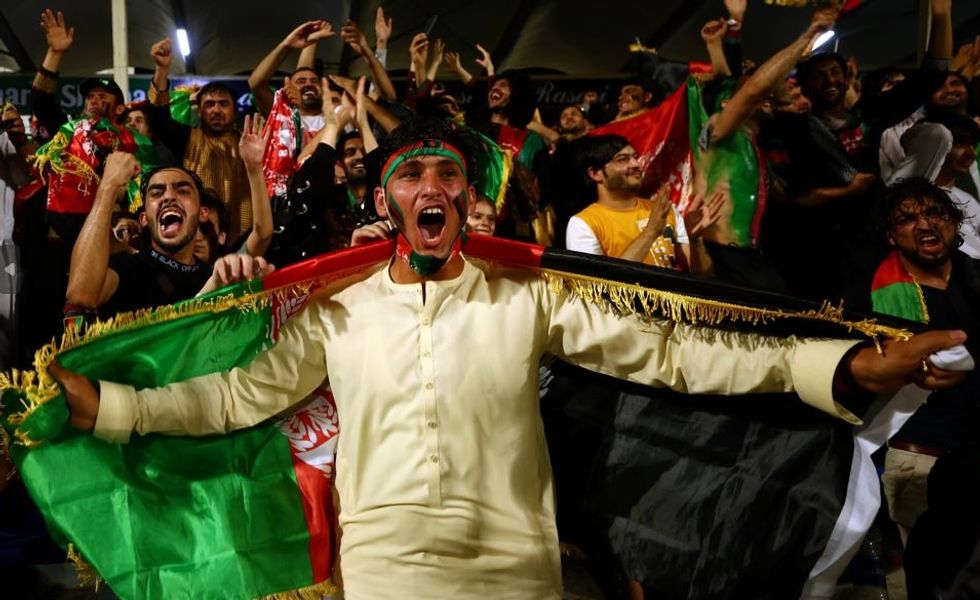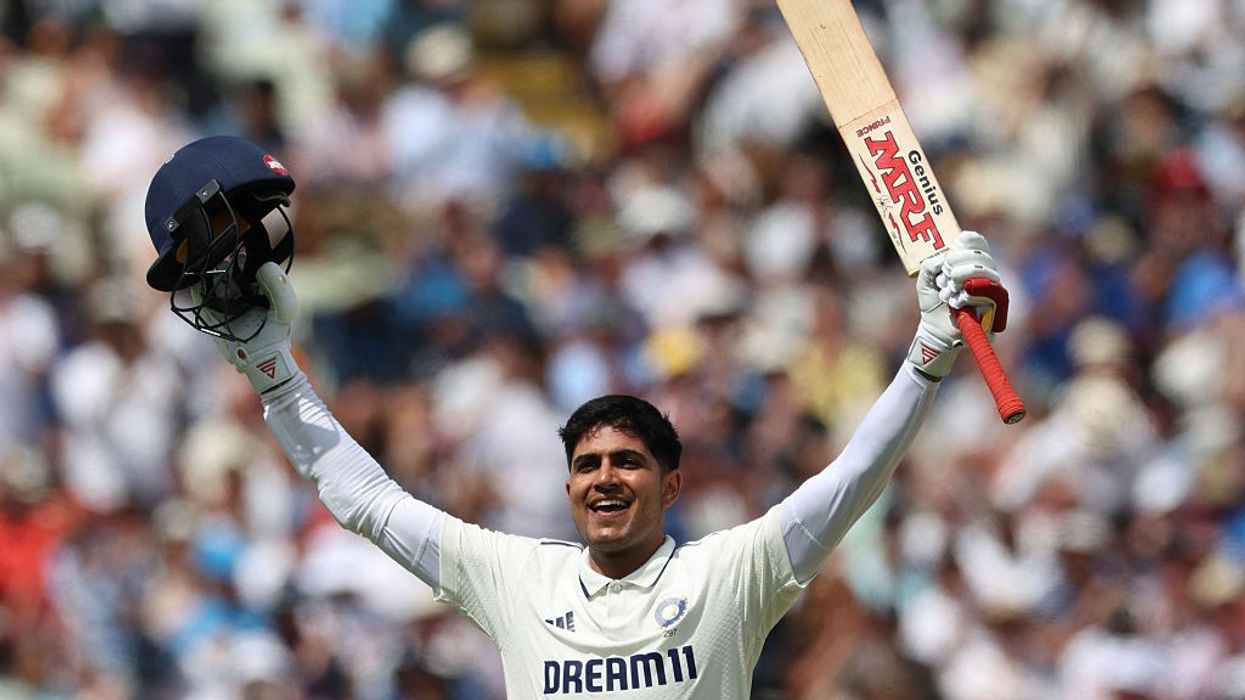FIREWORKS and celebratory gunfire raked Kabul’s skies as Afghans celebrated their stunning eight-wicket cricket World Cup defeat of Pakistan, a rare burst of public jubilation since the Taliban takeover.
Hundreds of fans swarmed the streets of the capital late Monday (23), joining a morass of honking car traffic which wardens struggled to tame.
Ecstatic passengers hung off car doors as pedestrians danced and played music despite an effective ban on song and dance dictated by the Taliban government.
“Afghanistan has been through so much recently, such moments are always special and must be celebrated properly,” said Kabul resident Sharifullah, who goes by one name.
“It feels like we have won the World Cup,” the 25-year-old told AFP. “Sport always brings unity among the people. Today we are celebrating the victory as a nation.”
A superb batting and bowling display saw Afghanistan record their highest chase in ODI cricket, with a successful pursuit of a 283-run target set by Pakistan.
It was their first ever victory over Pakistan in eight ODIs, and came just a week after their shock victory over defending champions England.
Afghans have been glued to screens of all sizes in recent days – from mobile phones, to restaurant TVs and a small number of big screens broadcasting in public parks.
Afghanistan and Pakistan have had fractious relations since the Taliban returned to power in August 2021, with Islamabad claiming Kabul is failing to rein in militants plotting strikes on its soil.
Authorities recently pledged to evict 1.7 million undocumented Afghan migrants who have crossed into the country over the past several decades during successive conflicts.
Opening batsmen Ibrahim Zadran, with 87, was awarded player of the match and dedicated the win to “people who are sent from Pakistan back home to Afghanistan”.
Although records show cricket being played in Afghanistan more than a century ago, most of the country’s top players learned the game in refugee camps in Pakistan.
“We had never witnessed such an amazing performance,” said 23-yearold Taliban government employee Noor Ahmad. “Tonight Afghanistan’s people are enjoying it, and Pakistan’s people are crying.
“We want to celebrate all night. We are going to live and enjoy the moment till morning,” he said.

Afghanistan’s win was hailed by the Taliban government, which has enforced an austere imagining of Islam squeezing women out of public life and effectively barring their participation in sport.
“We congratulate the national cricket team, cricket board, and all Afghans on this victory,” said Maulawi Abdul Kabir, political deputy of the prime minister’s office. “This competition showed that Afghan youths are capable in any field and can win. We wish them more success.”
Many members of the Afghan women’s cricket team fled the nation as the Taliban swept back to power.
This month players who settled in Australia told AFP they had been threatened for taking part in activities which brought “dishonour” to their faith, country or families.
There is still debate over whether Afghanistan should lose its International Cricket Council membership for cutting women out of the game, a move which would effectively ban their men from playing international matches.
But for 30-year-old Hamidullah, Monday night’s win offered an uncomplicated moment of joy. “We thank our national team from the bottom of our heart for this victory,” he said. “We waited forever to win against Pakistan, and finally, today was the day.”

















